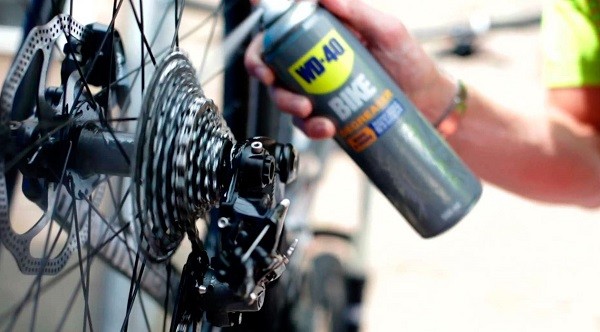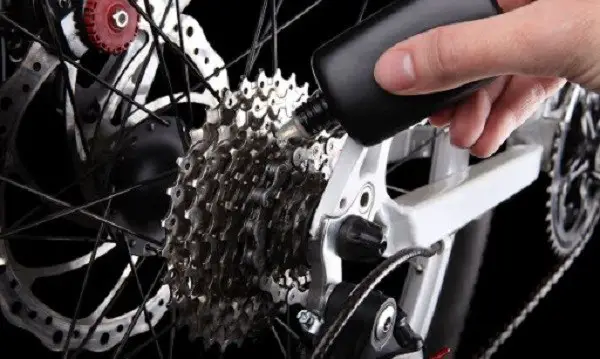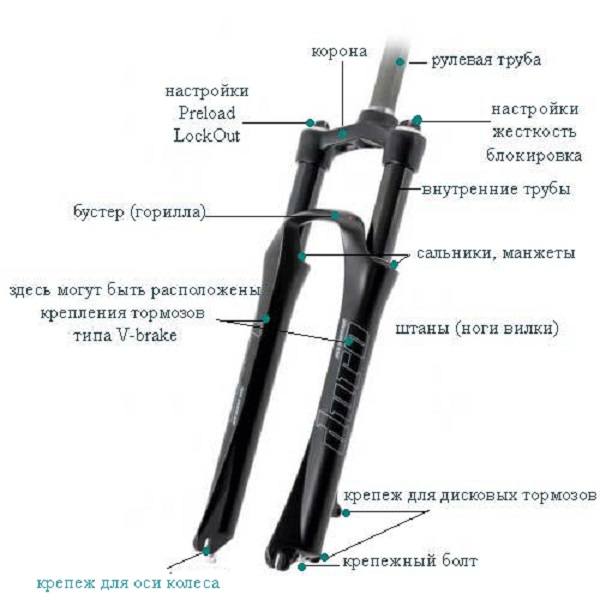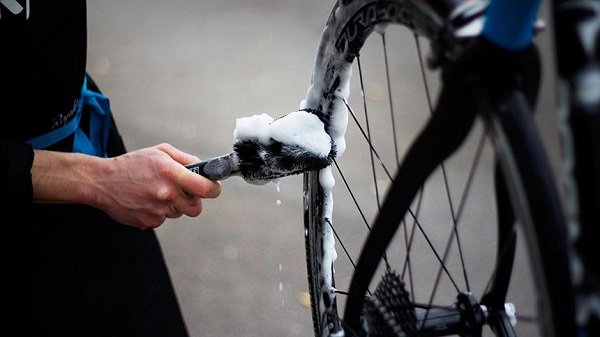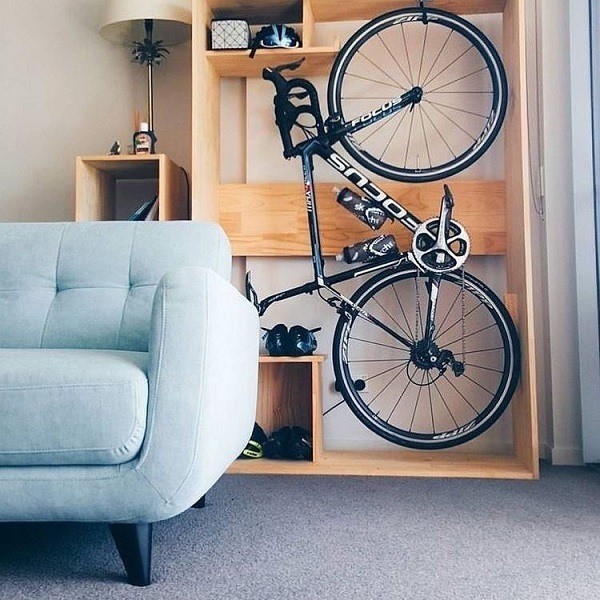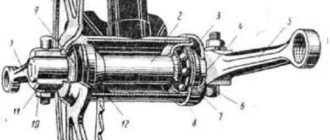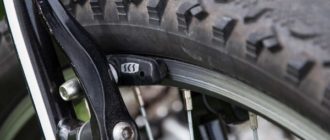If you want to enjoy your bike for many years to come, it is important to take good care of it. It is important to wash your bike in good time, especially the chain, which can often become very dirty. Taking good care of your bicycle will help prevent the chainrings and sprockets from wearing out. To keep them free of dust, it is important to remove excess grease. To keep the chain from wearing out too quickly, it is important to wash it once every 2 months and after the rain. In this article, you will learn how to care for your bike properly and intelligently.
Drive Gear Maintenance
The actuator is also called the transmission. It is needed to transmit the force from the cyclist’s feet to the rear wheel. It includes the chain and sprockets, connecting rods with pedals, bottom bracket, and derailleurs. The drivetrain is a hard-wearing system. It requires more frequent maintenance. To prevent wear and corrosion it is important to take good care of it, to wash and lubricate it.
Do you know how to care for your mountain bike? Use a brush and soapy water to clean the gearbox. Use a soapy rag to wrap it around the rear derailleur and pedal backwards. Then use a brush to wash the front sprocket and wipe it with a dry rag. They clean the pedals and connecting rods. Wash the gears, taking out even the smallest part.
How to Care for Your Bicycle Chain
To know how to properly care for your bicycle, you need to determine which parts require more care.
The chain is a very important part of your bicycle. To keep the chain from wearing out, it is important to use a dry cloth to wipe it down in the evening after riding your bicycle, and then lubricate it. It is a good idea to use a metal or plastic cover to protect the chain. Instructions on how to care for your bike will help you keep it clean.
Chain cleaning is done in a certain sequence:
- The bike is positioned so that the rear wheel is raised.
- Soak a rag in solvent or alcohol.
- Wrap the cloth around the chain so that it slides in your hand.
- The pedal is twisted back and the chain is wiped through the rag. The procedure takes 10 minutes.
- If the chain is very dirty, it is treated with WD40 or a similar cleaner before cleaning.
Lubricating the bike chain
Lubricate the bike chain every 50 to 100 km. The other parts of the bike should be checked annually and lubricated if necessary. An experienced cyclist knows when his bike needs lubrication. The chain is signaled by a rustling noise that signals the need for lubrication. Lubricate your bike once a week and every time it rains to prevent this from happening.
Lubrication when caring for your bike is done in a variety of ways.
- Lubricant is dripped on the links. The pedals are rotated. It spreads over all the links, penetrating into every part of them. After a while, the excess oil is removed with a dry rag.
- A syringe is dripped onto the chain of the inverted bicycle. The moving chain spreads the lubricant over all the links. Remains of the lubricant are removed.
Lubricants can be:
- liquid. They are packaged in bubbles with a special dispenser. Grease is dripped onto the links with a dispenser, oil can, or syringe;
- calcium. They prevent the formation of rust, they are not afraid of high and low temperatures. They protect the bicycle for a long time;
- silicone. They do not destroy rubber parts, they are gentle to them. They can be liquid, thick and in the form of a spray. These are oxygen-containing organic compounds with silicon and a solvent that increase resistance to dust adhesion;
- grease (thick). They are used for preserving the chain. They are used to treat all the links, hubs, and threads. Bicycles treated with thick lubricants are stored for a long time, the appearance of rust and chain abrasion is excluded. They are sold in cans and tubes;
- Teflon greases. Besides solvent, they contain antistatic elements, which retain dust. Teflon oil is the best against abrasion. It withstands high pressure;
- aerosols. These means are convenient, versatile. They are used for all types of bicycles. The product is easy to apply – just spray the lubricant on the individual chain links, and after 5-10 minutes, remove the excess with a rag.
Sprocket care
Sprockets are often covered with dust or dirt, so they need to be thoroughly cleaned to prevent wear and tear. Cleaning can be superficial or complete. Complete sprocket cleaning is done two to four times a year. It consists of a thorough cleaning of their surface and lubrication of these parts. A full sprocket cleaning requires that the system and cassette be disassembled.
A surface cleaning eliminates disassembly of the sprockets and consists of wiping them with a rag or brush. Surface cleaning is done behind the system sprockets.
The cassette sprockets are more difficult to care for because they often have grass wrapped around them. A quick tutorial on how to care for your bike will get the grass and debris out of the sprockets quickly.
- Remove the wheel.
- By picking up the grass with a spoke, a small rope or cord extract it from the chain.
- You can use a narrow brush with a long handle for cleaning.
For cassette sprockets, a complete cleaning is best because there are more sprockets in the cassette than in the system and dirt deposits often accumulate there.
Take care of your derailleurs
One very important part of the gearing is the derailleur. There are 2 on your bike, a front derailleur and a rear derailleur. The front derailleur is less fussy. It is important to clean it from accumulations of dirt, and sometimes it is necessary to treat it with a liquid on type WD-40. The rear derailleur has rollers that often get clogged with dirt. Dirt buildup on the rear derailleur affects the teeth (new teeth are flat on top and worn out ones are pointy). It is therefore important to prevent wear and tear by taking good care of your derailleurs. To prevent malfunctioning of a rear derailleur, you should periodically clean it of dust and dirt and lubricate the moving parts with a special agent WD-40 or an equivalent. Timely care and maintenance of the derailleurs will give you a comfortable ride on your bicycle.
Cable and derailleur care
Here is a quick note on how to properly care for your bicycle, especially the cables and derailleurs.
To take care of your cables and derailleurs, change them periodically. This should be done two or three times a year.
- To change a cable, you place the rear derailleur exactly opposite the smaller sprocket.
- Cut the clamped end of the cable.
- Undo the screw.
- Loosen the safety cover’s locking mechanism by turning it counterclockwise.
- Dismantle the guard.
- The head is located on the end of the cable. Slide the spring, pulling out the old cable.
- The new cable is inserted into the channel, fix it and return the spring into place.
- Reassemble the parts in reverse order.
Caring for your bike brakes
Serviceable brakes ensure the cyclist’s safety while riding on the roads. Therefore, it is important to monitor the condition of the components of the braking system. Foot brakes are used less and less often, mainly on single-speed bicycles. The manual disc brake system is considered more reliable. Brake pads wear out with time, so braking becomes ineffective even at low speeds. Therefore, it is important to keep an eye on the pads, wash dirt off them, and replace them when needed. It is important to clean the rim regularly with gasoline or solvent.
How to care for a shock fork
It is impossible to take care of a sport bike and other types of bikes without cleaning the suspension forks.
Bicycle forks can be rigid or shock-absorbing. Rigid forks do not require careful maintenance because they are protected by a housing. But a shock-absorbing fork should be taken care of.
There are several types of shock-absorbing forks.
- Spring-elastomer forks are unpretentious in maintenance – it is enough to wipe dirty places with a rag, to treat them with an anti-corrosion agent.
- Spring- and air-oil forks not only need to be cleaned of dirt, but also it is important to maintain the oil level by changing it periodically.
Your bike’s care instructions will allow you to properly change the oil according to your bike model.
How Often You Should Clean Your Bike
How often you wash your bike depends on how carefully you ride it and whether you use it in the rain. If you only ride it on the weekends or occasionally after work, washing it 2-3 times a season or 2-3 times a month is sufficient.
It’s best to treat your bike outside of the house somewhere on the riverbank.
When washing your two-wheeled horse, follow the point-by-point instructions – they will help you take proper care of your bike:
- Pour water into a container and wash one side of the bike with a rag.
- You can use a chain washer to clean the bike.
- Then wash the other side.
- Clean the frame after a rainstorm and put the bike on the saddle or handlebars.
- Dirt that has got into hard-to-reach places is poured over with water so that it gets soaked and washes off quickly.
- The bike is wiped down with a dry rag so you don’t see any streaks.
- Wait a while for the bike to dry naturally. Lubricate your bike after it has dried.
Taking care of your bike at home is a bit more complicated. To wash the bike, you should remove the wheels and put the bike under the shower. More attention is paid to the chain and stars. First wash off the first dirt, and then clean it with a brush or sponge, sponge, pre-moistened in warm water with diluted dish detergent or in soapy water. Reach hard-to-reach places are handled with a bottle brush or toothbrush. The foam is rinsed off and waits until it is completely dry. Only then is the lubricant applied.
If you do not want to take the wheels off the bike and wash it under the shower, you can put a mat in the hallway or kitchen and put the bike on it. Be careful not to splash the water, and then use a dry cotton rag to wipe the whole structure after washing.
In the yard of a private house bike wash the same way as at the river – it is much more convenient to do it on the ground than on the floor of the apartment.
- The wheel hubs with the bearings in them are not watered down, but wiped with a damp cloth to prevent water from getting inside. To prevent the frame from rusting, it should be protected from water infiltration.
- You can wipe off dust with a slightly damp cloth as needed.
- The chain is cleaned of dust and dirt to prevent abrasion of the stars and chain breakage.
- After cleaning, the chain is lubricated.
How to take care of a speed bike? This is often a question asked by its owners. Care for it is similar to the care of other models.
If you got on the bike in the rain, then wash the mud immediately, before it dries. Your iron horse should be carefully protected and properly care for him. The chain should always be washed under a stream of water with soap and a brush, and the foam rinsed with cold water. The chain is then lubricated.
If you don’t want to dilute the dirt, you can scrub it dry. The dirt dries, and then it is scrubbed off with a brush. It is desirable to remove the coarse dirt before it dries. Then use a brush to scrub off the remaining dry dirt, going over all parts from top to bottom. If the dirt is very dry, do not pick it off with a screwdriver. You could damage the paint and corrode the metal parts. Put a wet rag on your bike to let the dirt soak off and scrub better. Use a toothbrush to clean small parts and a coarse brush to clean the chain. If the bike only has dust on it, shake it off with a paint brush.
Sometimes cyclists in the winter wonder how to care for the bike after riding in the snow. Once inside, shake off the snow so it doesn’t melt and water doesn’t get inside the bearings. During the cold season, you should avoid large temperature fluctuations when washing, which is detrimental to your iron horse. Therefore, you can wash your bike immediately after the street with cold water, or you can wait until it warms up and wash with warm water.
More tips for storing your bike properly
A brief recommendation on how to take care of your bike is to store it.
You canstore your bicycle assembled or disassembled. When assembled, hang your bike on a wall so that it does not touch the floor. This is to avoid deformation of the wheels due to decreased pressure in the tires. It is important to store the bike in a room with heating. If there is no heating, the rubber may crack.
You can store your bike in a disassembled condition. To do this, remove the saddle and wheels. Parts are stowed in cloth or plastic bags. This way, they will retain their appearance better, preventing dust and dirt from appearing on the parts. It is best to store your bicycle in a closet, on a glassed-in balcony, or in a garage. Before storing your bicycle, it should be thoroughly washed, dried, and lubricated. The grease should soak in well before storing.
Conclusion
We have told you about how to care for your bicycle properly. It is important to periodically wash your bike for dirt deposits, clean it after rain, and lubricate it. In the winter, the bike is stored in a warm place. We are sure that our tips for bike care will help you prolong the life of your iron horse.


